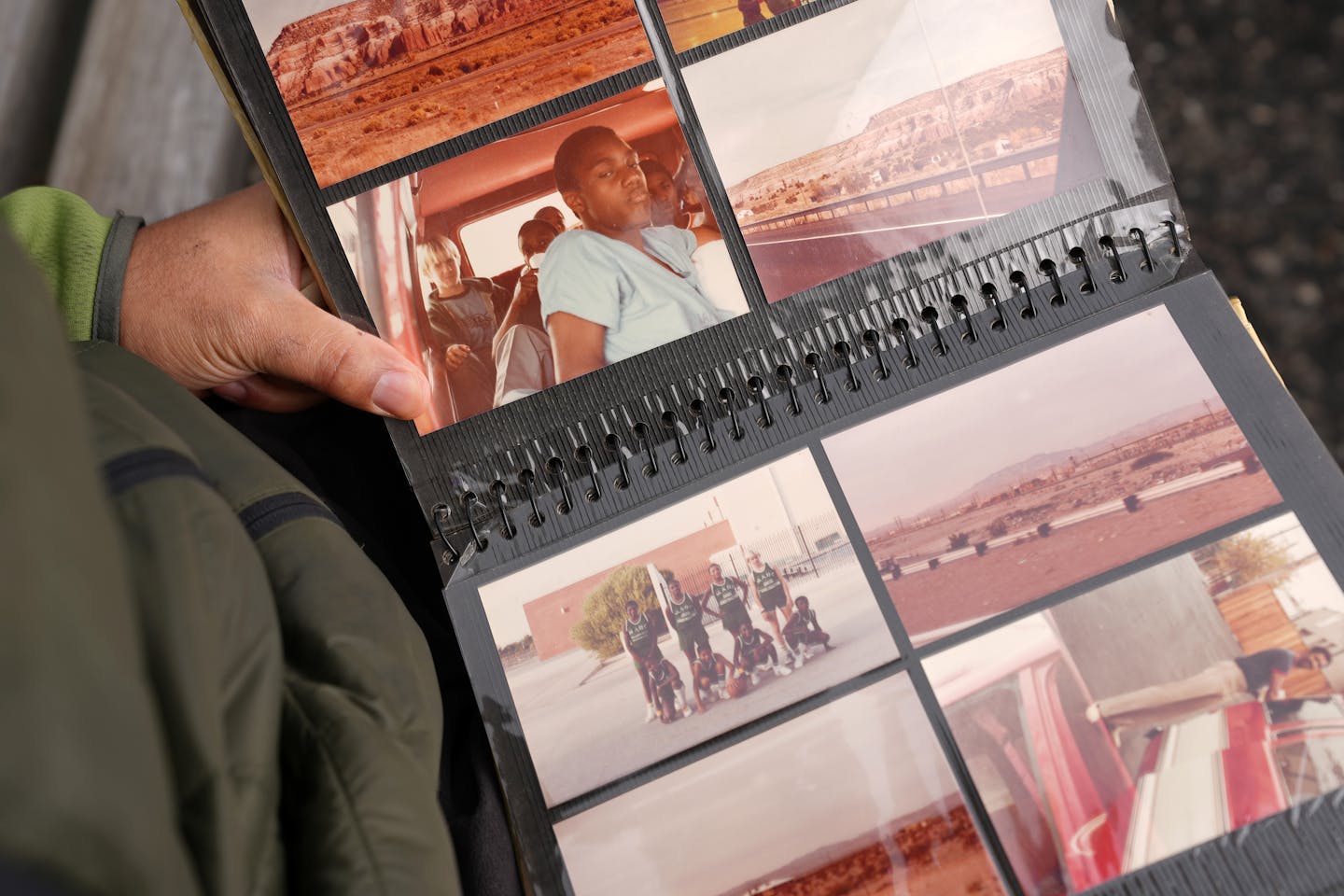Ralph Crowder III sat at an upscale bakery in south Minneapolis, feeling nostalgic for the Regina neighborhood where he grew up and for the groundbreaking middle school basketball team that impacted so many lives there.
Back in the 1980s, this area just east of Interstate 35W wasn't so fancy, he explained. Redlining had drawn a boundary nearby, relegating the city's small population of Black residents to the south side of 46th Street. Parents shopped at a small grocery store that is now the bakery. Kids found refuge on the basketball courts of McRae Recreation Center.
There, Crowder's father, Ralph Crowder Jr., formed a traveling youth basketball team that helped make history for Minneapolis' fledgling Black community.
"Not only were we winning, but we were going against the system," Crowder III said. "This was a Black inner-city team from Minneapolis and St. Paul. At that time, Black-led teams and organizations were extremely rare."
The story of the McRae All-Stars will serve as the centerpiece to a community discussion this weekend at the Minnesota History Center. The conversation will be about basketball's cultural explosion in the 1980s: Magic, Bird, Jordan.
And the 53-year-old Crowder will talk about the man who led the McRae All-Stars — his father, who died in 2020.
The 1980s was a seminal decade for Black Minnesota, in good ways and in bad. The state's Black population, then barely 1% of the state's population, began booming to what is now eight times its 1980 population. Hip-hop music started its cultural dominance while the crack cocaine epidemic tore apart families. And the McRae All-Stars started garnering attention for Minnesota hoops.
The group of mostly Black middle schoolers saw their success peak in 1984, when the team won the first annual Las Vegas Invitational, one of the premier youth tournaments in the country.
"Back then the Twin Cities wasn't like it is now," Crowder III said. "We're more seen now."
Ralph Crowder Jr. moved to Minnesota in the late 1960s to work as a professor in the University of Minnesota's Black Studies department. The program was borne out of a takeover of the administration building by Black students in 1969.
But he soon became disillusioned with the politics of academic life. The McRae All-Stars became a place where Crowder Jr. could flex his voice — "almost an extension of his classroom," his son said.
"It began as a father-son thing, then it turned into a broader sacrifice of love to the Black community in general," Crowder III said. "I want to bring out how important it was to have that kind of community support coming from male figures, especially during this time period when so many things were in transition."
Since the time of the McRae All-Stars, Minnesota, specifically the Twin Cities metro area, has turned into a basketball hotbed of the Upper Midwest. Chet Holmgren of Minneapolis has become one of the NBA's brightest young stars for the Oklahoma City Thunder; his Minnehaha Academy teammate, Jalen Suggs, was a lottery pick and starts for the Orlando Magic. The Jones brothers of Apple Valley, Tyus and Tre, starred at Duke University and have carved out productive NBA careers.
Crowder III and others who played a part in the developing basketball scene of the 1980s point to the McRae All-Stars as an inflection point for Minnesota hoops.
Dr. Charles Sims played basketball for the University of Minnesota in the 1970s and became a Minneapolis dentist. He lived down the street from the Crowders and served as an assistant coach for the McRae All-Stars. When Sims, whose son Jericho now plays for the New York Knicks, recently spoke about coaching that team, he began to cry.
"I get a little emotional about this. Because there were no Black kids in AAU," said Sims, using the acronym for Amateur Athletic Union, which serves as a catchall phrase for traveling youth basketball teams.
"We used to go to small businesses and beg for money, and any time we came up short, my office would take over. This team got Black kids going, got the community going. It seemed like we had to babysit a lot of kids, don't get me wrong. But we were good. Some tournaments wouldn't even let us in; we were too much of an all-star team. So we had to go out of state a lot of the time."
"This team brought basketball to Minnesota and broadened it a lot," Sims added. "Not just for Black kids but for kids, period."
The team's story is one of several that the Minnesota Historical Society is telling as part of a five-part series about the Black experience in Minnesota.
"We've been working to share stories within the Black community that people in the community are familiar with but people outside are not," said Avi Viswanathan, the historical society's director of community engagement. "We're trying to lift that up so they feel connected to history in a way they haven't before. Telling this history isn't just telling the trauma that Black communities and native communities are victims of, but it's about the joy, resilience, power and different contributions of those communities."




